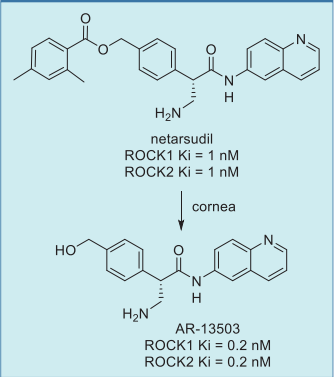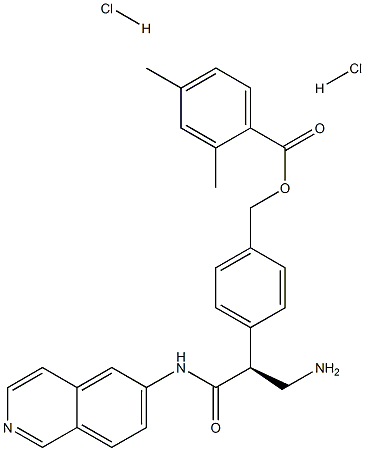Description
Netarsudil is a member of the aminoisoquinoline amide class of Rho-associated kinase (ROCK) inhibitors, binding reversibly to the ATP-binding sites of both ROCK1 and ROCK2 isoforms with low nanomolar affinity. As a 2,4-dimethylbenzoate ester prodrug of AR-13503, netarsudil offers enhanced permeability through the eye compared to the active drug. Upon ocular administration, it is absorbed through the cornea and metabolized by corneal esterases to release the more potent metabolite AR-13503, which has five times greater ROCK inhibitory activity than netarsudil itself.

Uses
Netarsudil is the first trabecular outflow drug approved in 2017 for lowering elevated intraocular pressure (IOP) in patients with open-angle glaucoma (OAG) or ocular hypertension.
General Description
Class: serine/threonine kinase;
Treatment: glaucoma;
Other name: AR-13324;
Protein binding = >97%
Biological Activity
ki: 0.2-10.3 nmnetarsudil (ar-13324) is a rock inhibitor.the rho kinases are serine/threonine protein kinases existing as 2 isoforms, rock1 and rock2, which are widely expressed in various tissues, such as the trabecular meshwork. rock can promote the assembly of actin stress fibers and focal adhesions and can also regulate cell contraction and motility.
in vitro
previous study showed that at the cellular level, netarsudil had been shown to be able to induce loss of actin stress fibers, cell shape changes, loss of focal adhesions, as well as changes in extracellular matrix composition of tm cells [1].
in vivo
animal efficacy study found that the topical treatment of netarsudil was able to affect both proximal (trabecular meshwork and schlemm's canal) and distal portions (intrascleral vessels) of the mouse conventional outflow tract [2].
target
Primary targets: ROCK1/2, NET
References
[1] sturdivant jm et al. discovery of the rock inhibitor netarsudil for the treatment of open-angle glaucoma. bioorg med chem lett. 2016 may 15;26(10):2475-80.
[2] li g et al. visualization of conventional outflow tissue responses to netarsudil in living mouse eyes. eur j pharmacol. 2016 sep 15;787:20-31.



